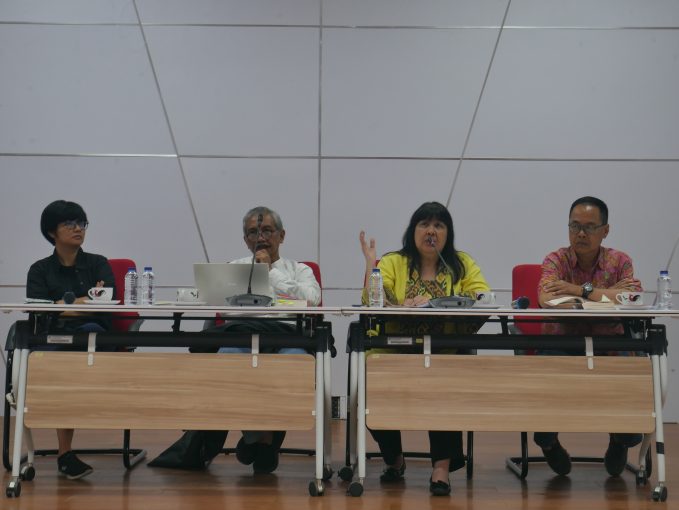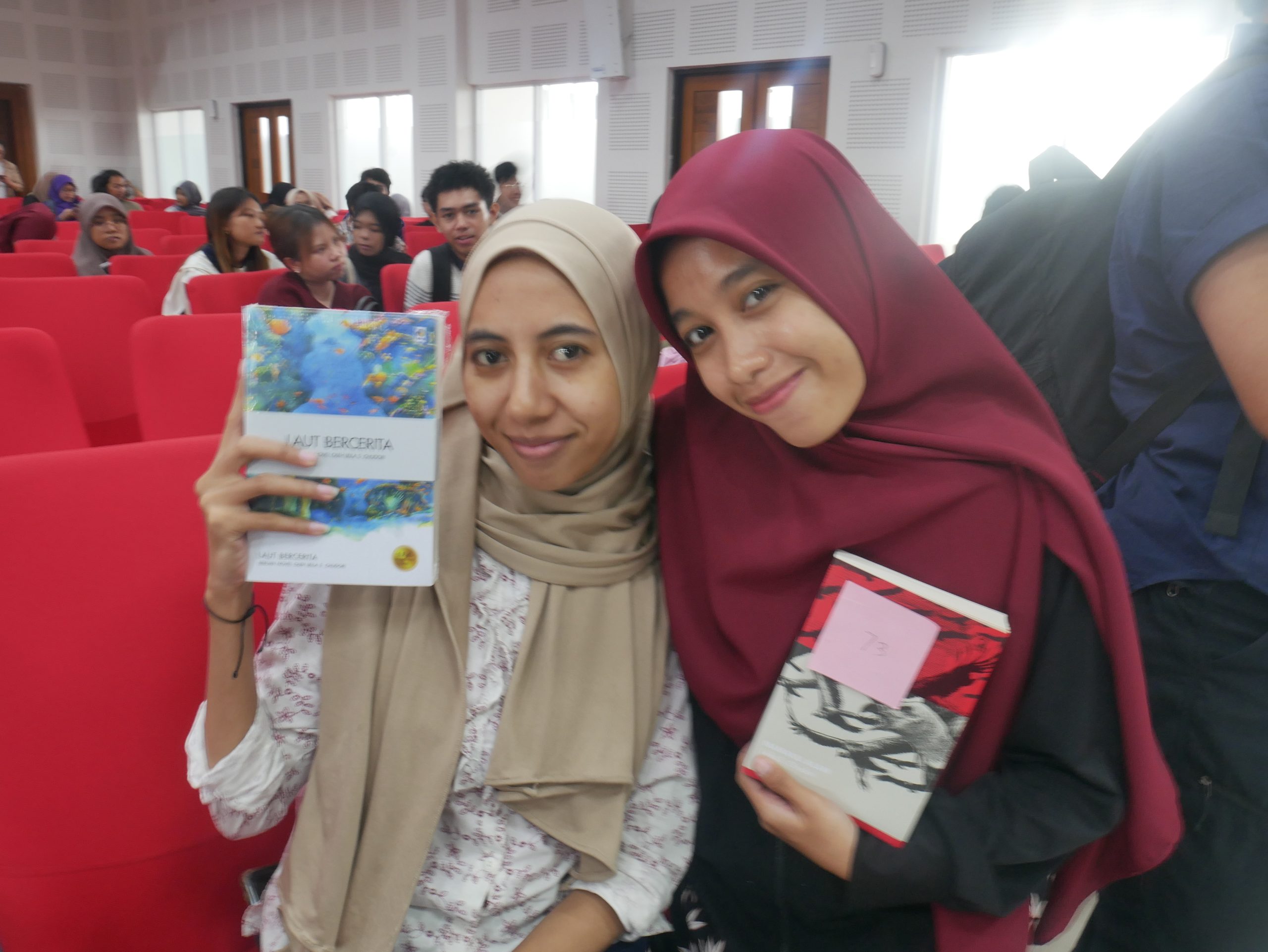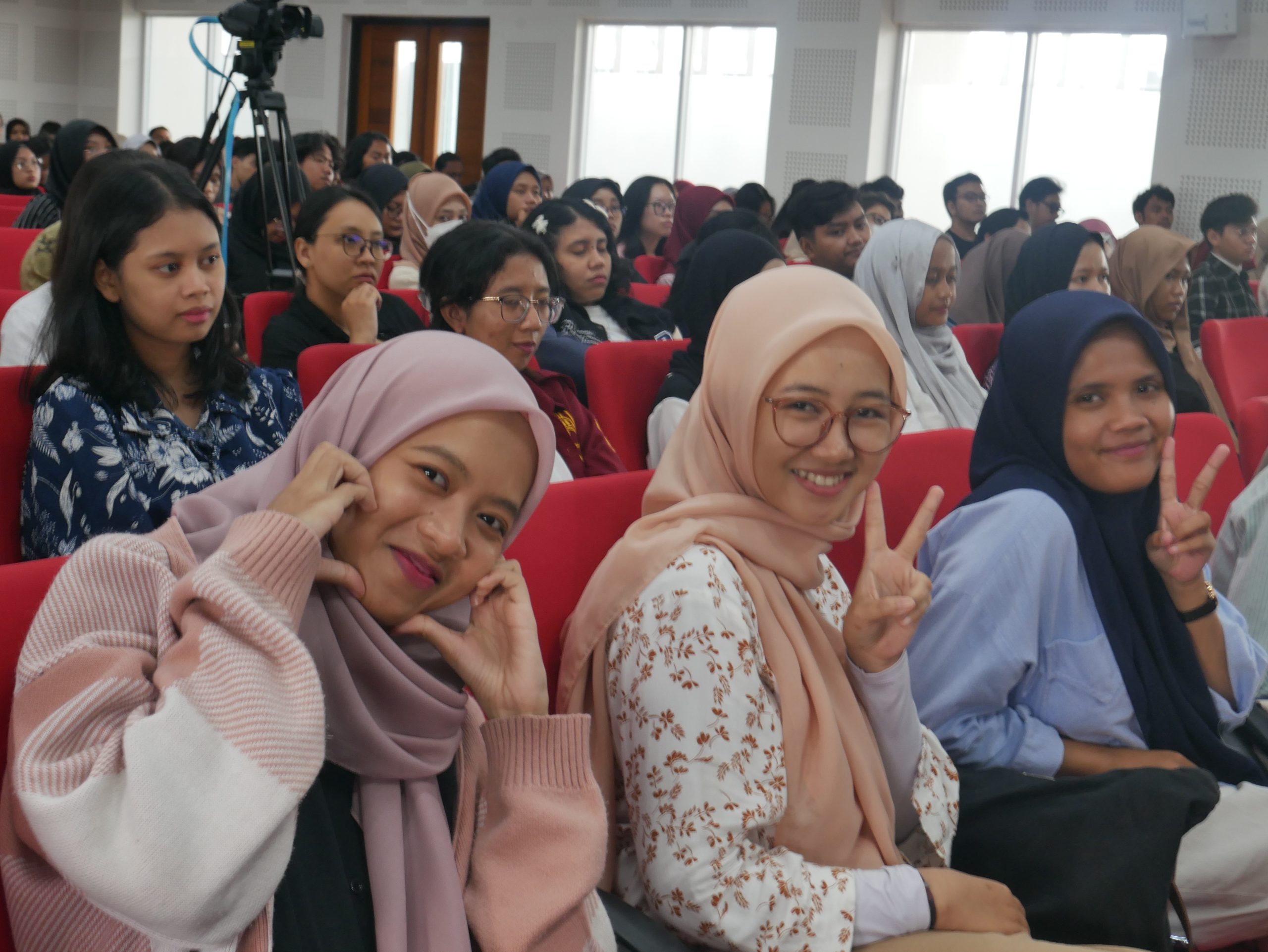
The Literary Expert Lecture was held on Monday, May 13, 2024 in the Auditorium Room of Soegondo Building 7th Floor and Zoom Meeting at 13.00-16.00 WIB. The three speakers that afternoon were Leila S. Chudori, T.A. Prapancha Hary, Dr. Sudibyo, M.Hum. Leila S. Chudori is a retired Tempo journalist and Indonesian writer who has written numerous short stories, novels, and television drama screenplays. Her books that have been published by KPG Publishers are Malam Terakhir, Pulang, Nadira, Laut Bercerita in softcover and hardcover versions, and most recently, Namaku Alam. Dr. Sudibyo, M.Hum. is an extraordinary lecturer at the History Study Program, Javanese Literature and Culture Study Program, as well as S2 and S3 Literature Study Programs at the Faculty of Cultural Sciences, Universitas Gadjah Mada. T.A. Prapancha Hary or familiarly called Mas Tatung, is a clinical psychologist and lecturer at a private university in Yogyakarta, as well as Abdi Dalem Kraton Yogyakarta. He was born and raised in Yogyakarta, pursuing his undergraduate and postgraduate education at the Faculty of Psychology, Gadjah Mada University.

Leila S. Chudori, as the first speaker, explained about her journey in writing the novel “Namaku Alam”. Since the beginning of writing Namaku Alam, Leila planned a storyline that contained a search, identity, and the process of finding answers. This begins with the characterization of the protagonist, the research process for novel writing, the initial design of the basic framework of the story to be written, the formation of the main character and important characters, the finalization of the basic framework of the story, and the concoction of several themes raised in the novel. Leila tries to show that in dark situations there is always hope. For example, Leila tries to show how people who are repressed in the past can still tell their stories through various ways and mediums.
Through the presentation of Dr. Sudibyo, M.Hum., he explained that in the novel “Namaku Alam” there are issues such as the entanglement of photographic memory, dystopia, and traumatic memory. The images of utopian successes in the novel, such as freedom from bullying, lead to failure, which in this case becomes dystopia. In “Namaku Alam”, traumatic memories are attempted to be negotiated, however, in this first volume, the negotiation is still unsuccessful, the nightmares experienced in the novel can be read as evidence of this failure. Alam’s strong photographic memory, in this case, makes her unable to escape her past traumatic experiences.

T.A. Prapancha Hary, seeks to answer whether Alam’s trauma can disappear or linger? In “Namaku Alam”, the first volume of the novel, according to Prapancha, the character Alam still retains his trauma. There is always a conflict between Alam and himself. Alam, in this situation, has an oedipus complex. Alam’s behavior, which always tries to protect the people around him, shows how Alam tries to be a “father” figure as a protector described in the oedipus complex phenomenon. Expressive expressions in the form of cursing by Alam in this novel actually show how his disappointment cannot be defeated which is then collected in the form of cursing. The hopes that are still kept by Alam in a difficult situation prove that this character has the talent of good emotional processing.

